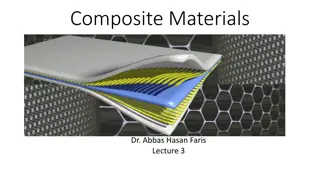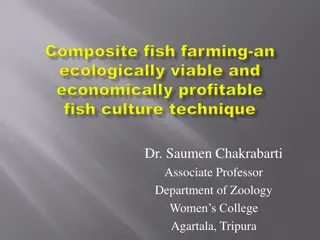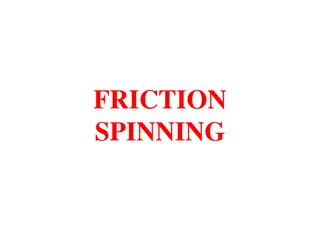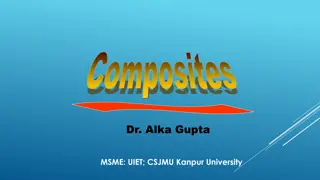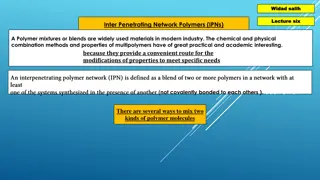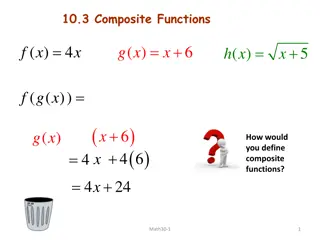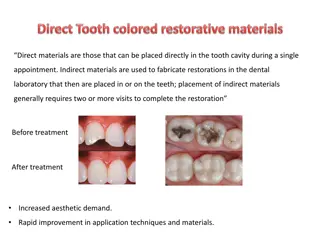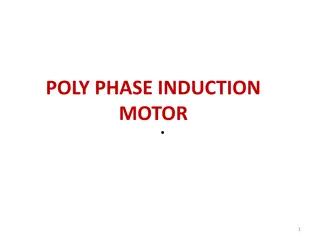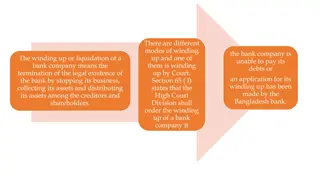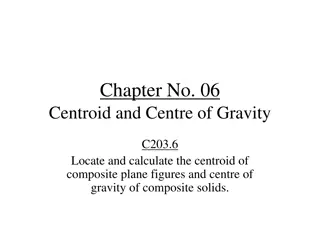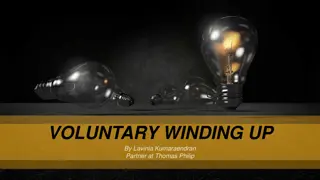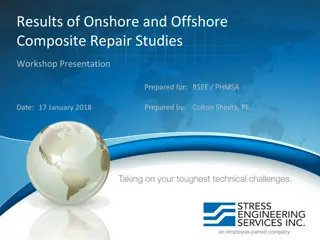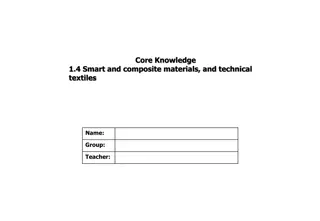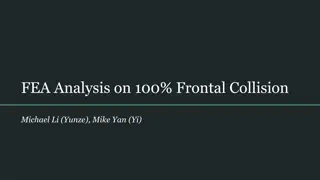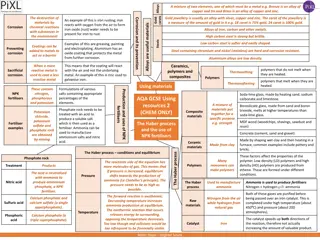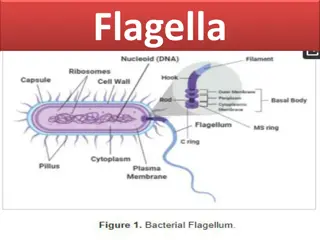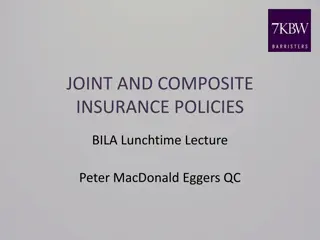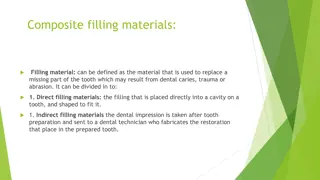Understanding Filament Winding Process for Composite Materials
Filament winding is an automated open molding process used for manufacturing hollow products like tubular structures, pressure vessels, and pipes. This process involves winding resin-impregnated fibers over a rotating mandrel to create high-strength composite parts. Common raw materials include continuous fibers like glass, carbon, and Kevlar, along with liquid thermoset resins. The process offers advantages such as controlled fiber orientation, high strength-to-weight ratios, and cost efficiency, while some limitations include shape restrictions and the need for finishing processes for external surfaces.
Download Presentation

Please find below an Image/Link to download the presentation.
The content on the website is provided AS IS for your information and personal use only. It may not be sold, licensed, or shared on other websites without obtaining consent from the author. Download presentation by click this link. If you encounter any issues during the download, it is possible that the publisher has removed the file from their server.
E N D
Presentation Transcript
Composite Materials Dr. Abbas Hasan Faris Lecture-10
Filament Winding Process Filament winding is a process in which resin-impregnated fibers are wound over a rotating mandrel at the desired angle. A typical filament winding process is shown in Figure. Filament winding is an automated open molding process that uses a rotating mandrel as the mold. This process is used for the manufacturing of hollow, (generally cylindrical) products. The operation is repeated to form additional layers, each having a criss-cross pattern with the previous until the desired part thickness has been obtained
in which, a carriage unit moves back and forth and the mandrel rotates at a specified speed. By controlling the motion of the carriage unit and the mandrel, the desired fiber angle is generated. This is a predominant composites manufacturing process for axisymmetric composites such as compressed gas storage tanks or pipeline sections. The process also offers speed and cost advantages for structural axisymmetric parts such as struts, axles, and drive shafts. The advantages of this process are that it is a very fast method, resin content is controlled, makes high-weight to strength laminates, can obtain high fiber weight percentages, and can achieve controlled fiber orientation that gives directional strength characteristics. Disadvantages are that the shape is limited to circular and oval products, the mandrel may be expensive, and poor external surface finish may affect aerodynamics in some applications (thus needs a finishing process, machining/sanding of the exterior surface).
1- Major Application The most common products produced by the filament winding process are tubular structures, pressure vessels, pipes, chemical storage tanks. Used to produce round-form products that have a high degree of structural integrity (tanks, pipes, pressure vessels, etc.). A rotating mandrel is used as the mold and is automated. Examples: sail boat masts, cement mixers, aircraft fuselages, tanks, chemical storage tanks, gas and pressure cylinders. Filament wound glass reinforced plastic (GRP) is used for water supply piping systems. It provides clean and lead-free piping system. Filament wound pipe reduces the pumping energy required to move water by 10 to 35%, due to its smooth interior surfaces compared to concrete or ductile iron pipe.
2- Basic Raw Materials In general, starting materials for filament winding are continuous fibers (yarns) and liquid thermoset resins. Yarns are kept in spool form at the back rack and passed through a resin bath located in the carriage unit. Fibers get wet as they pass through the resin bath. Glass, carbon, and Kevlar fibers are used for the filament winding process but glass fibers are more common because of its low cost. Epoxy, polyester, and vinylester are used as resin materials. Glass fibers with polyester resins are widely used for low-cost applications. 3- Tooling The most common tooling material for the filament winding process is a steel mandrel. Steel mandrels are chrome plated in certain applications to get a high-gloss finish on the inside surface of the composite structure as well as to aid in easy removal of the mandrel.
For some applications, such as pressure vessels, the mandrel is not removed and becomes an integral part of the composite structure. The non-removal mandrel provides an impermeable layer/barrier surface on the composite inner surface and thus avoids leakage of compressed gas or liquid inside the pressure vessel. 4- Making of the Part To make filament wound structures, a mandrel is place on the filament winding machine as shown in Figure. The mandrel rotates and the carriage unit moves relative to the mandrel to lay down the resin-impregnated fibers at a specific angle. The carriage unit can move along the x, y, and z axes as well as rotate about these axes. In two-axes filament winding machines, the mandrel rotates and the carriage unit moves back and forth only in one direction.
Before winding begins, the mandrel is coated with release agent. Once the mandrel is prepared, it is placed between the head and tail stocks of the machine. During wet winding, fiber yarns, which are placed in spool form at the creels, are passed through the resin bath located in the carriage unit and then to the mandrel through the payout eye. Laminate is formed after a series of relative motions between the mandrel and the carriage unit. To get the desired winding, the machine operator inputs various parameters such as pipe diameters, mandrel speed, pressure rating, band width, fiber angle, etc., depending on the software requirements. After creating the desired fiber angle distribution, the mandrel with the composite laminate is removed to a curing area where the laminate is cured at room temperature or at elevated temperature. Once the part is cured, the mandrel is extracted using an extracting device. Sometimes, a small taper angle is provided in the mandrel for easy removal of the composite part.
5- Methods of Applying Heat and Pressure The pressure during filament winding is applied by creating fiber tension. In general, 1 lbf to 6 lbf fiber tension is created using some tensioning device or by passing the fibers through the carriage unit in such a way that it creates tension. Composites thus fabricated are cured at room temperature, or in an oven at a higher temperature. For large-volume production, the process of part fabrication is automated. In an automated line, the filament wound part with the mandrel is moved to a heated chamber using a robot. The part slowly moves in the heated chamber and comes out after partial or full cure of the composite part. The part is then sent to the mandrel extracting station where the mandrel is extracted and sent back to the filament winding machine for winding purposes. All of this can be done automatically.
The stress in each fiber is f, acting on the cross-sectional area A of the fiber band. The force on the fiber is A f. The component of this force along the x direction (along the length of the cylinder) is A f cos . This force is acting over an area Ax=A/cos . Dividing the force along the x direction over the area normal to the x direction yields the stress x as: x = fcos2 (1) Similarly, for the stress along the y direction (or hoop direction): y = fsin2 (2) where is the winding angle. It can easily be seen that y/ x = tan2 (3) Also from equilibrium conditions, it can be shown that for a thin-walled pressure vessel under internal pressure, the longitudinal and hoop stresses are given by:
x =?? y = ?? wehere p= internal pressure t= thickness r= radius of the cylinder (for thin cylinder either inside or out-side radius can be used) from previous equations: ??= 2 (4) 2? (5) ? ??
winding at layers at two different angles: When winding consists of two layers at different angles, the following equations can be derived. Using equilibrium along the longitudinal direction: x(t1+ t2) = f1t1cos2 1+ f2t2cos2 2 (6) Using equilibrium along the hoop direction: y(t1+ t2) = f1t1sin2 1+ f2t2sin2 2 (7)
Example A pressure vessel with internal diameter of 40 cm is subjected to an internal pressure of 7 MPa. It is to be wound using fibers at 90 and at +/ 45 . Fiberglass with a strength of 1 GPa is used. If the thickness of the hoop (90 ) layer is 2 mm, what would be the required thickness of the +/ 45 layer? Solution From Equations (6) and (7) we have: x(t1+ t2) = f1t1cos2 1+ f2t2cos2 2 y(t1+ t2) = f1t1sin2 1+ f2t2sin2 2 Let layer 1 be the 90 layer and layer 2 be the +/ 45 layer. x(0.002 + t2) = (109Pa)t2(0.5)
y(0.002 + t2) = (109Pa)(0.002 m) + (109Pa)t2 (0.5) But, y/ x= 2 (109Pa)(0.002 m) + (109Pa)(0.5 t2) = (109Pa) t2 6- Advantages of the Filament Winding Process 1. For certain applications such as pressure vessels and fuel tanks, filament winding is the only method that can be used to make cost-effective and high- performance composite parts. 2. Filament winding utilizes low-cost raw material systems and low-cost tooling to make cost-effective composite parts. 3. Filament winding can be automated for the production of high-volume composite parts.
7-Limitations of the Filament Winding Process Filament winding is highly suitable for making simple hollow shapes. However, the process has the following limitations. 1. It is limited to producing closed and convex structures. It is not suitable for making open structures such as bathtubs. In some applications, filament winding is used to make open structures such as leaf springs, where the filament wound laminate is cut into two halves and then compression molded. 2. Not all fiber angles are easily produced during the filament winding process. In general, a geodesic path is preferred for fiber stability. Low fiber angles (0 to 15 ) are not easily produced. 3. The maximum fiber volume fraction attainable during this process is only 60%. 4. During the filament winding process, it is difficult to obtain uniform fiber distribution and resin content throughout the thickness of the laminate.



